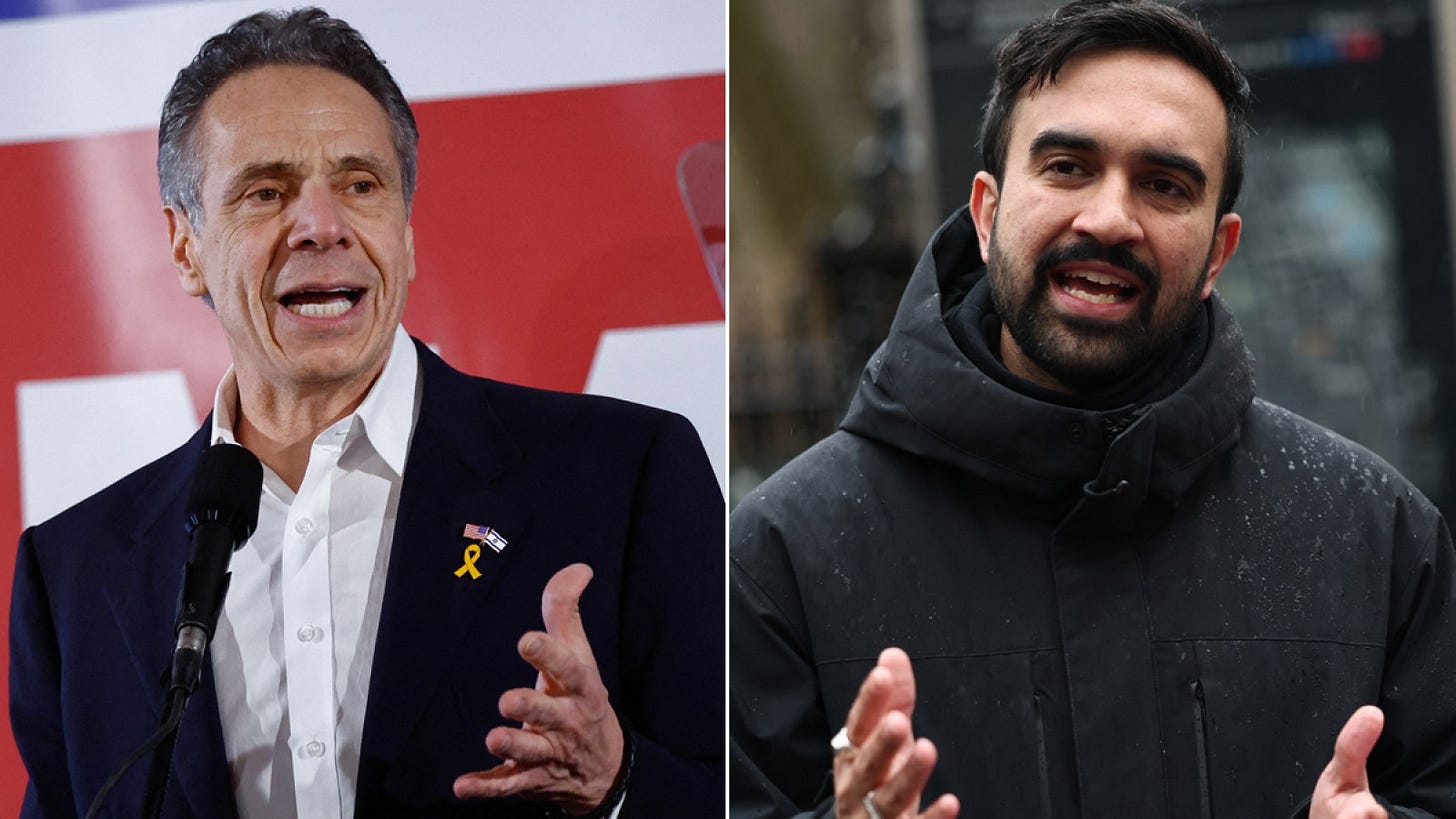Ranked-choice voting & NYC's next mayor 🗳️
& how do Americans feel about changing their election systems?
Something unprecedented happened in New York City this week: a politician asked his supporters to give their money to another candidate.
Left-wing State Assemblyman and mayoral candidate Zohran Mamdani encouraged his supporters to donate money to rival candidate Adrienne Adams… as part of an effort to beat favored candidate Andrew Cuomo.

He did this because New York City uses ranked-choice voting, and Mamdani believes that having a stronger field of candidates will increase his chance of winning the Democratic primary election and becoming NYC’s next mayor.
Today’s newsletter will explore the concept of ranked-choice voting and why it’s becoming more popular in the U.S. and around the world.
Most U.S. elections are held using first-past-the-post voting (FPTP), which means that the candidate who wins the most votes wins the election.
Simple, right?
But a growing number of states, cities, and countries are rejecting FPTP voting in favor of ranked choice voting (RCV).
Under an RCV election system, voters rank their candidates in terms of preferences. (see below)
If none of the candidates gets more than 50% of the vote, then the votes that went to the third-place candidate are distributed to the candidate that their voters picked as their second choice.
If there still isn’t a candidate with more than 50% of the vote, the process continues with third- and fourth-choices until a candidate has won a majority of the ranked votes.
The argument for ranked-choice voting is that a plurality vote — particularly in a two-party system — can lead to the election of politicians who don’t have the support of a majority of voters.
And because people feel like they only have two options in an election, they are less likely to support third-party candidates.
Or they may feel like voting isn’t even worth it.
RCV can make voters feel like their votes actually matter.
Let’s use an example: Imagine there’s an election with the following results.
Candidate A wins 39% of the vote.
Candidate B wins 20% of the vote.
Candidate C wins 41% of the vote.
Under a plurality system, Candidate C wins.
However, you could criticize the election on the grounds that a candidate won despite the fact that 59% of the population voted for another candidate.
Or, you could try a ranked-choice system. Under this system, the 20% of voters who selected Candidate B would have their second-choice votes counted when Candidate B falls to third place.
So, imagine that:
80% of the people who picked Candidate B as their first-choice candidate had picked Candidate A as their second-choice candidate
And only 20% of those voters picked candidate C as their second choice candidate
Candidate A would win the election, with 55% of the vote compared to 45% for Candidate C.
Even though Candidate C won the most first-place votes, the candidate-ranking system ensures that the ultimate winner is the candidate aligned with the preferences of a majority of voters.
RCV in the USA
RCV isn’t a new idea: The city of Ashtabula, Ohio, first used RCV over 100 years ago in a 1915 city council election.
In addition to cities like NYC and San Francisco, Alaska and Maine are the two U.S. states that have replaced plurality voting with RCV in most major elections.
In both states, RCV was passed via voter referendums despite opposition from politicians in the state legislature.
RCV is allowed in some form in 14 U.S. states and is banned outright in 10 Republican-leaning states.
The ten states that have passed some sort of ban on RCV are: Montana, Idaho, South Dakota, Kentucky, Tennessee, Alabama, Florida, Louisiana, Mississippi, and Oklahoma.
RCV was on the ballot in Arizona, Colorado, Idaho, Missouri, Montana, Nevada, and Oregon this past November, but voters in these states rejected RCV.
There is a silver lining for RCV advocates: Washington D.C. residents voted to adopt RCV, and Alaskans narrowly voted to keep their RCV system in place.
It will be interesting to see if RCV shakes things up in NYC’s important Democratic mayoral primary next month.













